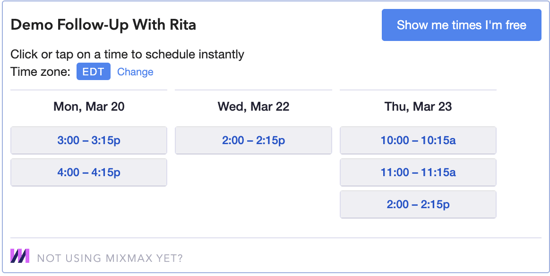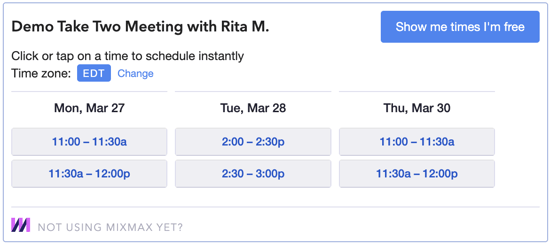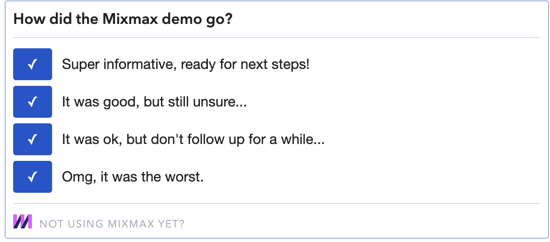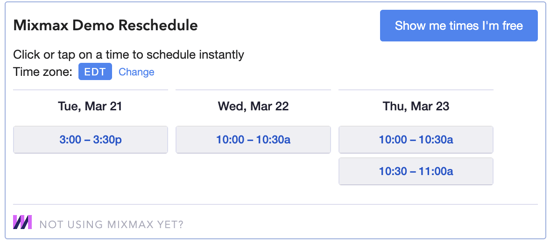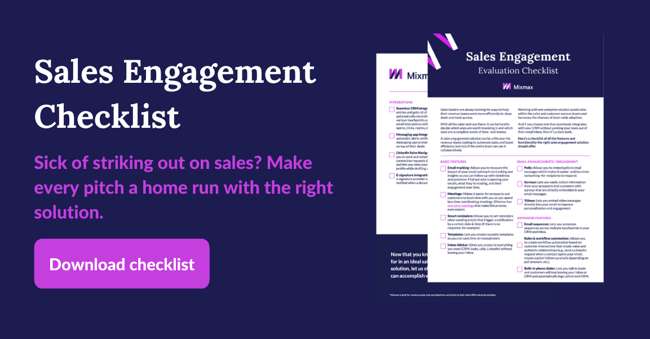Demo follow-ups are like the second date after a great first one. You're excited, but also a little nervous about making a good impression.
Just like in dating, the follow-up after a demo is a critical step in the sales cycle. It's the time to build on the momentum, deepen the relationship, and move closer to closing the deal.

But let's face it, writing follow-up emails can be daunting, especially when you don't want to come off as pushy or desperate.
So how do you go about it?
In this post, we offer tips on how (and when) to send demo follow-up emails, plus we share our own sales team’s follow-up templates that you can customize and recycle in your own email sequences.
Why follow-ups after demos are essential
It shouldn't be a surprise that follow-up emails are a natural next step in the sales cycle. They're what help you move deals forward and ensure that your prospect is interested in what you're offering.
Follow-ups are especially important if you're working in a competitive environment where the prospect has many options available. You want to make sure that your prospects know how much you care about them and their business.
Plus, it doesn't hurt to remind them about what they learned during your demo!
It's also a time to deepen your relationship with your prospect and establish trust. If they see that your demo follow-up email is personalized (and not spammy), they're bound to feel all nice and gooey inside—which could make it easier to finally seal that deal.
And no, you can't skip the follow-up entirely and still hope for a positive outcome. When only 2% of sales occur within the first cycle of contact, you're gonna have to put your all into these emails.
(You got this.)
When to send follow-ups after demos
So we know that follow-up emails keep you in contact with prospects and convince them to sign that contract. But how do you know when to send them?
In general, the best time frame is within 24 working hours of your first sales demo meeting.
Sounds like a pretty tight turnaround, right? The reality is that we're in a competitive market, and you don't want to lose a prospect before they've even had time to think about your offer.
If you're quick to act after the demo, then prospects will see that as a sign of urgency and commitment: It shows that you're willing to work hard for them and won't let them slip through your fingers.
Of course, you're gonna need some effective strategies and tools at your side to prevent chaos. A sales email template, paired with your pick of sales automation solutions, can give you the edge that you need to keep your sales cycle chugging at full speed.
How to end a demo call with Nick Cegelski from 30 Minutes to President's Club
How to create effective demo follow-up email templates
Before you even think about creating templates for your follow-up strategy, you're gonna need to know who your audience is.
For instance, are you targeting SMBs? If so, you should probably focus on creating a more personal, customer-centric approach. However, if your target audience consists of large corporations and other businesses with high-volume sales cycles, consider using a more professional tone.
Chances are, you've already covered these bases when designing your lead engagement strategy—but it's never a bad idea to double and triple-check. Similarly, your templates should match the tone you're trying to project, while still allowing room for personalization.
Okay, that's a bit of a tall order, but you don't have to stare at that blank canvas without any help. Mixmax email templates are designed to be as flexible as they are streamlined, so it's up to you to decide how far you want to take them.
Mixmax email templates feature
We got you.
Best practices for using demo follow-up email templates
As tempting as it might be, you don't want to send out the same sales email template over and over again—that's just lazy.
...understandable, but lazy. And ineffective.
See, customizing your follow-up emails will help you get more conversions from prospects who might’ve overlooked your initial, cookie-cutter message. Better yet, it's as easy as adding a few details about the prospect and their needs, like their name (duh) or the specific issue they're facing.
A/B testing is another way to trim the fat from your follow-up strategy and optimize your email templates so they convert better. For example, you can test different subject lines, call-to-action sentences, and even the length of your email. All these things can help you find out what works best for your audience.
Finally, don't let the ease of an email template convince you to start spamming prospects. With Mixmax, you can create email sequences that automatically send your follow-ups at the right time without being too pushy, too late, or too frequent.
| Related post: SaaS Demo Best Practices: Checklist & Tips for Success |
7 product demo follow-up email templates that convert
1. Follow-up to confirm next steps
Subject: Your team rocks! Next steps ⬇️
Hi {Name},
Thanks so much for meeting with me yesterday! You and your team are fantastic and it was great to learn more about your initiatives around [X and Y].
Key takeaways:
- Initiative + value prop 1
- Initiative + value prop 2
As promised, here are two customer examples with similar use cases, plus a video explaining [specific feature that helps with their challenges].
- Case study 1
- Case study 2
- Video link
As a next step, here’s my availability for next week so we can take 20 minutes to dig a little deeper and discuss implementation.
Can’t wait to chat again!
{Signature}
2. Free trial follow-up
Subject: Trial setup + next steps
Hey {first name},
Thank you and [the respective team] so much for your time and for sharing your challenges with [X and Y]. I could see how motivated you all are to tackle these issues asap.
Based on our conversation, here’s how [product name] can help you get there:
- Challenge and solution #1
- Challenge and solution #2
So what’s next?
I will set you and your team up with a trial account so you can play around with all the functionality we discussed. If you run into any issues or have questions, our product experts are at your service 🫡.
You’ll get a separate email with all the details to get started.
Let’s also set up a call next week to discuss how things went with the trial.
![]()
Excited to chat again!
{Signature}
3. Unanswered question follow-up
Subject: Got your answer!
Hey {Name},
It was a pleasure reviewing [Product name] with you today and discussing how it can best be leveraged for [Prospect’s company]. Thanks again for sharing your challenges surrounding [X and Y].
As promised, I discussed [their question(s)/concerns] with my team and here’s what we came up with:
- Question/concern + answer #1
- Question/concern + answer #2
I think it might be best for you and your team to experience [your product] first-hand to get a feel for it.
Are you ok with a [date] trial start date?
You’ll have two weeks to test drive it after that, and our team will be on standby if you need help with anything.
Cheers,
{Signature}
4. Technical difficulties follow-up
Subject: Take two 🎬
Hello {Name},
First of all, it was a real pleasure meeting you and your team today. Again, SO sorry for the unexpected technical issues!
But judging from our chat and having heard your challenges with [X and Y], I know we can help you conquer them ⚔️.
If you’re open to a do-over for the demo, it would be my pleasure to set it up. Dropping my availability below so you can choose whichever time works best for you.
I’ve also attached a slide deck and custom report for your use case. Feel free to share with the rest of the team.
On standby if you have any questions!
{Signature}
5. Proposal follow-up
Subject: Incredible meeting! Here’s what’s next…
Hey {Name},
Yesterday’s meeting was awesome–thanks so much for letting us walk you through [product name] and for sharing your team’s challenges around [X and Y].
As discussed, here’s how [product name] meets your requirements:
- Challenge + solution #1
- Challenge + solution #2
As a next step, I can set up custom onboarding for you and your team so you can explore features and functionality that are most beneficial to you asap.
I will draft the proposal and send it your way by [date].
Does that work for you?
Best,
{Signature}
6. Feedback request follow-up
Subject: Be honest, how’d it go?
Hey {Name},
Meeting you and your team was fantastic–thanks so much for taking the time to explore [your product] and share your challenges around [X and Y].
As demonstrated, here’s how we can help make [year] your best one yet:
- Challenge + solution #1
- Challenge + solution #2
As a next step, I’m going to send over some materials that will help guide you in your decision-making like customer testimonials and explainer videos.
In the meantime, it would be SUPER helpful if you could let me know how the presentation went. Be as honest as possible (I can take it!).
Keep an eye out for my next email and so psyched to chat again!
{Signature}
7. No-show follow-up
Subject: Missed you 💔
Hi {Name},
Sorry you couldn’t make our meeting earlier! No hard feelings–I know how crazy work/life can get and I’ve missed a meeting (or three) myself.
I’m dropping my availability below if you want to reschedule. And I’m sharing a case study with [hyperlinked customer name] that I think aligns with your particular use case. They were able to [positive outcome] in just under [timeframe]!
Hope to chat soon!
{Signature}
Measuring the success of your demo follow-up email templates
Now that you've got a great demo follow-up email template, it's time to put it to work.
To measure the success of your follow-up strategy, there are a few metrics Mixmax can help you track:
- Open rate: Open rate isn't everything per se—it doesn't tell you anything about how people felt after they read your email or whether they took action. But it's still an important metric to track because it shows that people are reading what you're sending them, and could keep you from wasting time on prospects who've ghosted you.
- Click-through/download rate: CTR gives you a little more info to work with. It tells you how many people clicked on a link in your email, which can give you an idea of how well your message resonated with them.
- Reply rate: This is another measure of engagement, and it's especially important in the early stages of building a relationship with prospects. If they took the time to read your email and respond to it—even if they don't agree to a deal right away—then they're probably a good prospect for future opportunities.
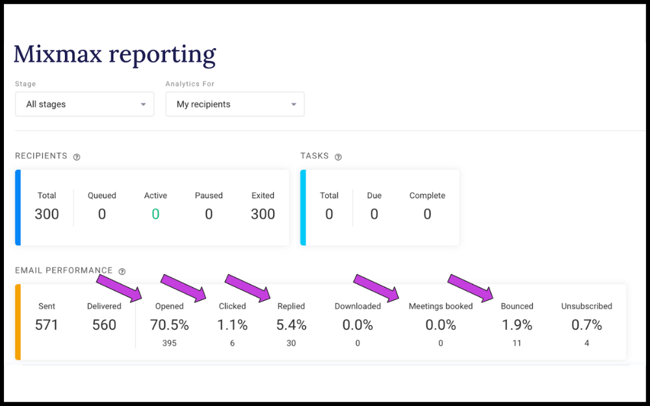 Mixmax reporting
Mixmax reporting
You should analyze this data to figure out what wording and format got the most responses, downloads, etc. Then, apply changes to your next demo follow-up email, and continue the pattern until you've perfected a follow-up strategy.
Key takeaways
Here are the key takeaways from this post:
- Importance of post-demo follow-ups: Post-demo follow-up emails are critical for building relationships and keeping the momentum with prospects, especially in competitive markets.
- Timing: Send follow-ups within 24 working hours after the demo to show urgency and commitment.
- Template usage: Customize email templates to fit the audience, using tools like Mixmax for flexibility and automation.
- Best practices: Personalization and A/B testing are key for effective follow-ups to avoid a generic approach.


